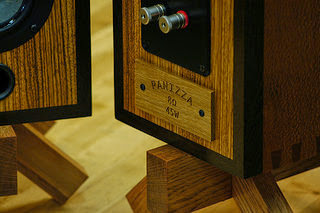 Taunton Press recently released a limited edition reprint of the first edition of Fine Woodworking magazine first published in 1975. The magazine was originally devoted to advanced woodworkers and woodworking as fine art. I thought it might be interesting to purchase this edition because my own craft and organ building workshop practice had grown out of an era that began during this time when the use of wood as a sculptural material was far more used in practice than it probably is now.
Taunton Press recently released a limited edition reprint of the first edition of Fine Woodworking magazine first published in 1975. The magazine was originally devoted to advanced woodworkers and woodworking as fine art. I thought it might be interesting to purchase this edition because my own craft and organ building workshop practice had grown out of an era that began during this time when the use of wood as a sculptural material was far more used in practice than it probably is now.The first edition reprint reminded me of that time when large cast iron ruled. A workshop was considered no more than a table saw, band saw, jointer, and planer with possibly a router, drill, and sander thrown in. Hand tools such as a good set of chisels along with a plane or two completed the inventory.
Someone more research oriented than I am should write a better history, but after some time, the home improvement scene hit, and tool makers began concentrating their design and product efforts on this. A much wider array of innovative cordless, benchtop, and job-site tools can now populate a workshop space, and I have chosen to replace a lot of cast iron in the current manifestation of my workshop layout with this type of tool design.
I admit that until now, I have spent more effort here in Minnesota on technique, technology, and methods, and as a result, far less on actual design and construction much to the absence of a portfolio. I recently began to feel in fact a broken continuity to the work I did before as a pipe organ builder, and so have taken a back-to-basics approach, and have begun to study basic fundamentals and concepts of visual art.
Art does not have to be ironic, or a statement of disenfranchisement, or even playful or whimsical as is often thought. A functional object can make its own statement without being any of that, and still incorporate fundamental concepts of visual design to enhance its intended function. That will be my initial direction I think, to understand and appreciate the fundamentals of visual design and how those drive the creation of a work as a unique personal expression or experience, and by doing that, build objects that one can bond with beyond the simple consumer experience that currently defines most forms of ownership today.







